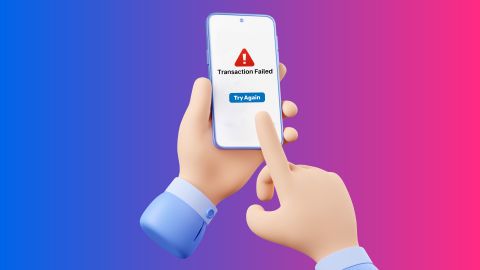Electrical Fire Safety: Prevention Tips and Emergency Guidelines
Keep your property safe from electrical fires with expert prevention tips, maintenance advice, and emergency response guidelines. Start protecting your space now!
Preventing Electrical Fires
-
-
Electrical fire hazards pose a significant risk in residential and commercial settings, often resulting in devastating consequences. These fires can occur due to various factors, including faulty wiring, overloaded circuits, and the improper use of electrical appliances. Electrical fires can ignite quickly and spread rapidly, often without warning, making it essential for individuals to be aware of the risks and take proactive measures.
Recognising common causes and implementing effective fire prevention strategies can reduce the likelihood of electrical fires. For efficient electricity bill payment, consider using Bajaj Pay for seamless transactions.Common causes of electrical fires
Faulty wiring: Aging or damaged wiring, such as frayed wires, loose connections, or outdated systems, can create sparks that ignite nearby materials, leading to fires.
Overloaded circuits: Plugging too many devices into a single outlet or circuit can overload the system, causing overheating and potential fires.
Improper use of extension cords: Using extension cords as permanent wiring solutions or exceeding their capacity can result in overheating, posing fire hazards.
Defective appliances: Malfunctioning appliances, especially those with frayed cords or damaged plugs, can cause electrical fires if not addressed promptly.
Lack of maintenance: Neglecting regular maintenance on electrical systems and appliances increases the risk of failures that could lead to fires.
Heat sources near electrical equipment: Heat-generating devices placed too close to electrical equipment or flammable materials can create dangerous conditions for fire outbreaks.
Improper installation: Poorly installed electrical systems or appliances may not function correctly, increasing the risk of short circuits and fires.
By being aware of these common causes, individuals can take preventive measures to protect their homes and businesses from electrical fire hazards.Signs of potential electrical issues
Flickering lights: Frequent flickering or dimming lights may signal problems with the wiring or overloaded circuits, requiring immediate attention.
Burning smell: A burning odour near outlets or appliances can indicate overheating wires or components, possibly leading to a fire if left unchecked.
Warm outlets: Outlets that feel warm to the touch could be overloaded or have faulty wiring, posing a potential fire risk.
Tripped circuit breakers: If circuit breakers frequently trip, this may indicate an underlying electrical issue that needs professional inspection.
Buzzing sounds: Unusual buzzing sounds from outlets or switches could indicate faulty wiring or other electrical issues that should be addressed promptly.
Discolouration around outlets: Dark spots or discolouration around outlets could suggest overheating and a potential fire hazard, requiring immediate attention.
By recognising these signs early, individuals can take action to address potential electrical issues before they escalate into dangerous situations.Essential fire prevention tips
Install smoke alarms: Ensure they are installed in key areas of your home, and test them regularly to ensure they are functioning correctly.
Use qualified electricians: Always hire licensed electricians for installations and repairs to ensure compliance with safety standards.
Avoid overloading circuits: Distribute electrical loads across multiple outlets and avoid using too many devices on a single circuit.
Regular inspections: Schedule routine inspections of your home’s electrical system to identify potential hazards before they become serious issues.
Keep flammable materials away: Keep a safe distance between heat sources (such as space heaters) and combustible materials (such as paper or fabric).
Unplug unused appliances: Disconnect appliances that are not in use to prevent potential overloads and reduce fire risks.
Use surge protectors: Protect sensitive electronics from power surges using surge protectors instead of standard power strips.
Educate family members: Teach everyone in your household about electrical safety practices and what to do in an emergency.
By implementing these fire prevention tips, individuals can significantly reduce the risk of electrical fires in their homes and workplaces.The role of fire safety systems
Fire safety systems play a crucial role in protecting lives and property from the devastating effects of fires. These systems include:
Smoke detectors: Early detection is vital for preventing loss of life. Smoke detectors alert occupants to smoke presence, allowing for timely evacuation and response.
Fire alarms: Integrated fire alarm systems provide audible alerts throughout a building, ensuring everyone is aware of a fire emergency, regardless of location.
Sprinkler systems: Automatic sprinkler systems help control or extinguish fires before they escalate, significantly reducing property damage.
Fire extinguishers: Portable extinguishers enable individuals to tackle small fires before they spread, providing an essential first line of defence against flames.
Emergency lighting systems: These systems illuminate exit pathways during fire-related power outages, guiding occupants safely out of buildings.
Fire safety plans: Comprehensive plans detailing evacuation routes, assembly points, and emergency contacts are crucial for an effective response during fire emergencies.
By investing in robust fire safety systems and ensuring they are regularly maintained, individuals and organisations can enhance their preparedness for potential fire incidents.Importance of regular electrical maintenance
Regular electrical maintenance is essential for ensuring the safety and reliability of electrical systems. Key benefits include:
Prevention of failures: Routine checks help identify worn-out components before they fail, reducing the risk of electrical fires and outages.
Increased lifespan of equipment: Proper maintenance extends the life of electrical appliances and systems by ensuring they operate efficiently without undue stress.
Compliance with safety standards: Regular inspections ensure that all electrical installations meet current safety codes and standards, minimising liability risks for property owners.
Cost savings: Addressing small issues during maintenance can prevent costly repairs later on due to major failures caused by neglect.
Enhanced efficiency: Well-maintained systems operate more efficiently, lowering energy bills and reducing environmental impact through lower energy consumption.
By prioritising regular electrical maintenance, homeowners and businesses can enhance safety while optimising performance across their electrical systems.Recommended standards and codes for electrical safety
Standard/Code Description National Electrical Code (NEC) Provides guidelines for safe installation of electrical wiring in residential and commercial buildings. International Electrotechnical Commission (IEC) Sets international standards for all electrical technologies ensuring safety across borders. Underwriters Laboratories (UL) Tests products for safety compliance; certifications indicate adherence to established safety standards. National Fire Protection Association (NFPA) Develops codes related to fire safety, including those pertaining to electrical installations. American National Standards Institute (ANSI) Oversees development of voluntary consensus standards for various industries including electricity management. Emergency response during electrical fires
1. Evacuate immediately: Prioritize getting everyone out safely. Only attempt to fight the fire if it is small and manageable.
2. Call emergency services: Once you are safe outside, call your local emergency services immediately and provide them with as much information as possible.
3. Close doors behind you: Closing doors as you leave helps contain the fire by limiting oxygen flow.
4. Stay low if there’s smoke: Smoke rises. Staying low helps avoid inhalation while navigating towards exits.
5. Avoid re-entering until cleared by authorities: Only return once firefighters declare it safe. Re-entry poses serious risks due to hidden flames or structural damage.Safety guidelines for residential vs. commercial spaces
Residential safety guidelines
Install smoke detectors on every level; test monthly.
Use child-proof outlets where necessary.
Keep flammable materials away from heat sources.
Educate family members about basic emergency procedures.
Ensure proper grounding for all major appliances.Commercial safety guidelines
Conduct regular training sessions on fire safety protocols for employees.
Install comprehensive sprinkler systems throughout facilities.
Maintain clear access paths to exits at all times.
Implement routine inspections by certified professionals.
Create detailed emergency response plans tailored specifically for business operations.Additional resources for fire prevention
- Local fire departments: Many offer free consultations on home safety assessments, which help homeowners identify potential fire hazards and improve safety measures.
- National Fire Protection Association (NFPA): This organisation provides extensive resources on fire prevention strategies tailored for different environments, including homes, workplaces, and industrial settings.
- Consumer Product Safety Commission (CPSC): This agency offers guidelines on safely using household appliances while minimising electricity-related risks, reducing the chances of electrical fires.
- Online training programs: Various organisations provide online courses focused on understanding relevant fire safety protocols at home and work environments, enhancing overall preparedness.
-
Recharge and Pay Bills
Mobile Prepaid
Mobile Postpaid
Broadband Bill Payment
Electricity Bill Payment
Bajaj Finserv App for All Your Financial Needs and Goals
Trusted by 50 million+ customers in India, Bajaj Finserv App is a one-stop solution for all your financial needs and goals.
You can use the Bajaj Finserv App to:
You can use the Bajaj Finserv App to:
- Apply for loans online, such as Instant Personal Loan, Home Loan, Business Loan, Gold Loan, and more.
- Explore and apply for co-branded credit cards online.
- Invest in fixed deposits and mutual funds on the app.
- Choose from multiple insurance for your health, motor and even pocket insurance, from various insurance providers.
- Pay and manage your bills and recharges using the BBPS platform. Use Bajaj Pay and Bajaj Wallet for quick and simple money transfers and transactions.
- Apply for Insta EMI Card and get a pre-approved limit on the app. Explore over 1 million products on the app that can be purchased from a partner store on Easy EMIs.
- Shop from over 100+ brand partners that offer a diverse range of products and services.
- Use specialised tools like EMI calculators, SIP Calculators
- Check your credit score, download loan statements and even get quick customer support—all on the app.
Frequently asked questions
What are the most common causes of electrical fires?
Faulty wiring, overloaded circuits, and improper use of appliances are leading causes of electrical fires.
How can I identify potential electrical issues at home?
Watch for signs like flickering lights, burning smells, warm outlets, and discoloured sockets.
What should I do if I suspect faulty wiring?
Contact a licensed electrician immediately for an inspection and necessary repairs.
Is it safe to use extension cords permanently?
No, extension cords are not designed for permanent use and can overheat, leading to fire risks.
How can I prevent overloading circuits?
Distribute devices across multiple outlets and avoid plugging too many appliances into one power strip.
Show More
Show Less




